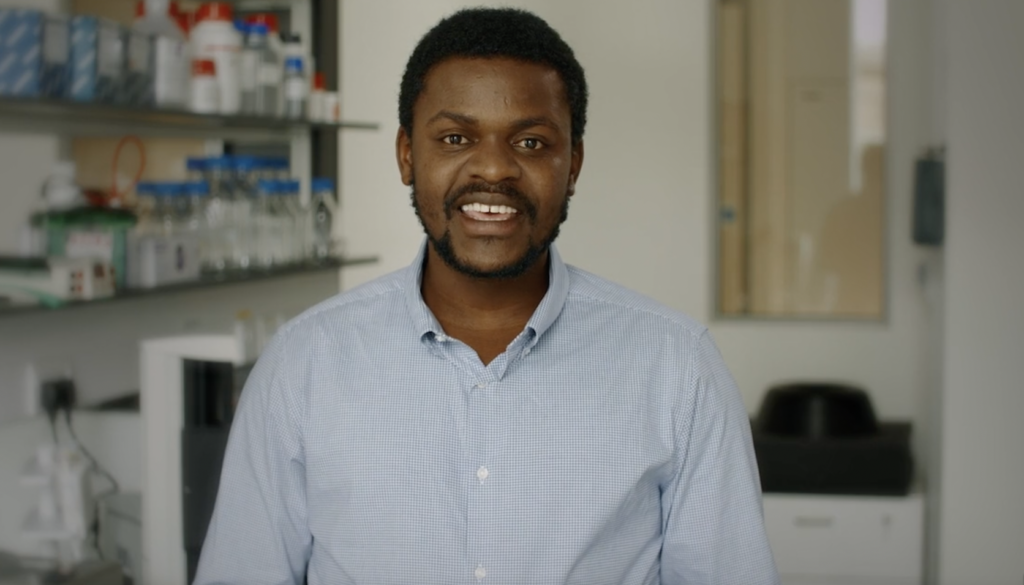Are you thinking of making a film to help win funding for a research project? Perhaps you need to recruit the next generation of outstanding candidates for your scholarship programme? Or maybe you want to make the public aware of your brilliant new outreach programme?
Academic video content can be a hugely effective marketing tool. But creating impact through video requires an additional set of techniques. We’ve been helping higher education teams including the University of Oxford make academic content for the best part of 10 years. Here are our top tips to make sure your video makes an impact.
1. Focus on benefits not features
If there’s one thing you remember from this blog, it should be to focus on benefits not features. A feature is a function or component of a product or service. A benefit describes how that feature can make someone’s life better or easier.
Let’s take, for example, a recruitment video about a medical postgraduate course. A feature of the course might be that it’s online and flexible working hours. The benefit would be that it allowed the academic to continue working in their clinical role whilst doing the course.
One of the best ways to showcase benefits is to include stories of the people who are benefiting themselves. For the medical course recruitment video, you could interview the staff running the course. They could give an overview of the programme. But even better; include academics who have completed the course and hear about how it has benefited their careers. That’s what’s really going to sell the course!
2. Make use of academic events to batch film content
One of the challenges of filming within an academic environment is that there are very busy schedules and limited time. So getting academics all into one place for the purposes of your filming can be a challenge! One way to do it is to base your filming around a pre-arranged event like a conference or residential programme. On the day, you might want to interview a number of staff for an overview film. But you could also use the opportunity to create even more content like a series of 90 second researcher story videos.
3. Keep academic video content short
Now this is probably one of the biggest challenges for any academic. They turn up for the interview and the producer wants them to summarise a 10,000 word, 3 year research project into a two minute video. It’s not easy but it’s really important. Less is more when it comes to video content. Videos need to be short to create an impression.
One interview trick is to let the academic answer the question then ask for a second shorter version to give you cutting options in the edit.
When preparing academic video scripts I always remember some advice that was given to me by an Executive Producer when I was a young BBC trainee. He said ‘say it in 3 words, not 20’.
As many University staff use Twitter, we often make academic videos a maximum of 2 minutes, 20 seconds. That’s the longest video you can upload to Twitter.
4. Keep language simple
Just like duration, the language needed in video is different from the usual language you might find in written academic content. It needs to be conversational so it’s accessible to a wide audience.
One tip is to say ‘imagine you’re describing this project to a friend’ when doing interviews with academics. Avoid abbreviations, acronyms and technical language. A good rule is to avoid words with 3 or more syllables.
5. Showcase diversity
It’s important to make your videos feel diverse so everyone watching can see themselves represented. This could be by including speakers from a range of nationalities, heritages, subject interests, socio-economic backgrounds, as well as age and genders.
6. Think about your interview backdrop
If you’re booking a room at a college or university, people will often want to put you in a meeting room. But meeting rooms generally don’t make good interview spaces. That’s because they often have plain white walls which don’t make interesting interview backdrops.
The best interview backdrops have some colour or interest in the background and plenty of depth behind the interviewee. It’s worth asking if there’s an alternative location.

7. Make them laugh
Jokes in videos about academic work? That sounds like a contradiction in terms! It’s always a good idea to include a lighter moment in most videos but with academic content, it’s more important than ever.
We recently made an Oxford University video profiling a researcher whose work is about an aspect of prison reform. That could be quite a heavy subject! In the video he joked that working with policymakers allowed him to see a positive impact of his work, when usually he only received negative feedback through peer review. Seeing him laugh and smile helped the audience see his human side and also provided a lighter moment in the video.
9. Optimise your content for social media
So you’ve got yourself a great video ready to share with the world….. Next you need to optimise it for social media. It would make little sense to put a lot of time and money into video content but not to share it effectively online.
If you’re posting a video to social media platforms like Facebook, Twitter and LinkedIn, it’s really important to post it natively to that platform. Native posting means uploading the video file directly to the social media platform rather than posting a YouTube link. A video that is posted natively will autoplay in people’s feeds and usually get hundreds or thousands of views. A YouTube link that people have to click in order for it to play is only likely to get a handful of views.
When posting videos on social media, it’s important to add captions that will grab the audience’s attention. You can find out the easiest way to add captions in this blog.
10. Create a thumbnail
It’s likely your video is also going to end up on YouTube. YouTube is a great platform to host your department’s video content. That’s because it’s owned by Google and is essentially the second largest search engine after Google. This means by hosting your video on YouTube, your video will be picked up in search engines and get more exposure.
When uploading videos to YouTube, it’s important to create a thumbnail. A thumbnail is essentially a cover shot for your video. It needs to include a great image from your video plus some text such as the video title and organisation logo. You can design one yourself using a platform like Canva and upload it with the video to YouTube. If you don’t upload a thumbnail, YouTube will pick a random image from the video to use as the cover shot. 99% of the time it ends up being an unflattering image of your interviewee with their mouth open!
About Bounce Video
Bounce Video is a video production company that is run by award-winning former BBC Producer, Grace Gibbons. We specialise in higher education video content. To talk to us about your project, visit our website or get in touch.
You can also read more video production tips on our blog.
